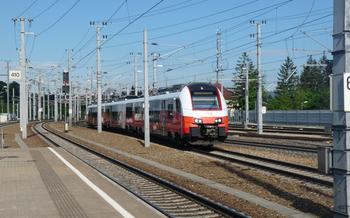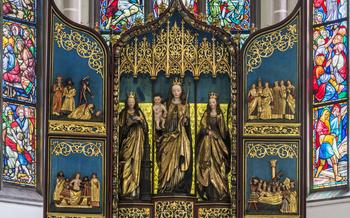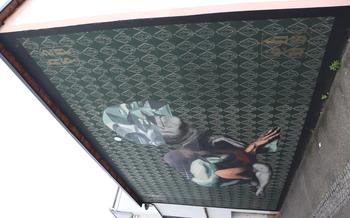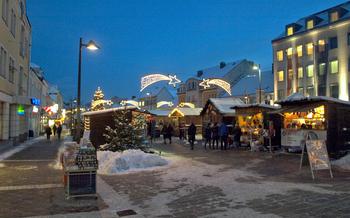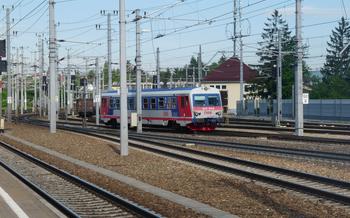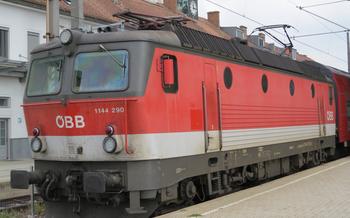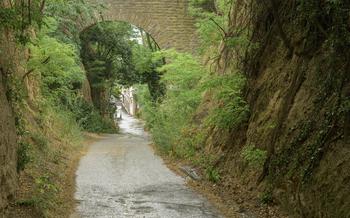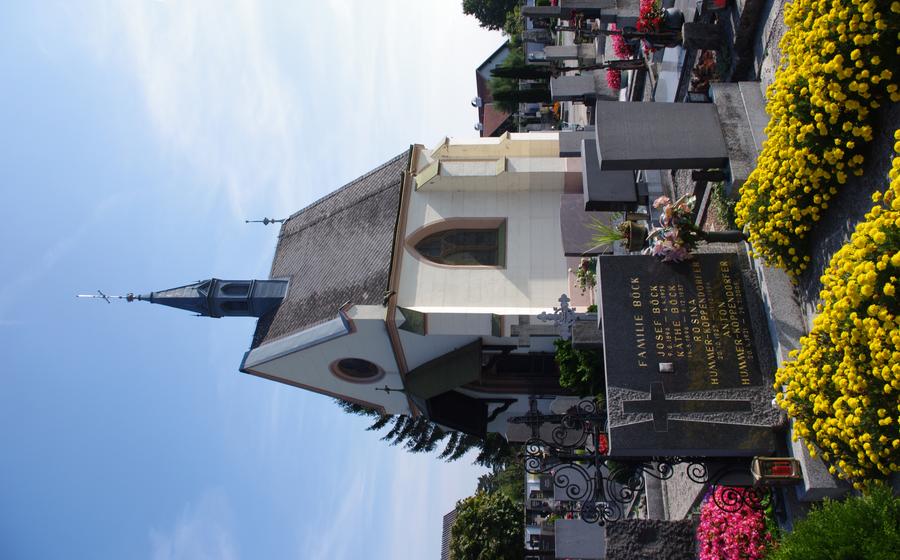
Melk Abbey
- Melk Abbey: A Majestic Symbol of Austria's Religious and Architectural Heritage
- Planning Your Visit: Making the Most of Your Melk Abbey Experience
- Step Inside: Exploring the Abbey's Interior Splendors
- Wander Through History: Uncovering the Abbey's Past
- Melk Abbey's Spiritual Legacy: A Journey of Faith
- Culinary Delight: Savoring the Abbey's Exquisite Cuisine
- Beyond the Abbey: Exploring the Region's Treasures
- Unforgettable Moments: Capturing the Essence of Melk Abbey
- Practical Considerations: Ensuring a Smooth Visit
- Historical Anecdotes: Bringing the Abbey's Past to Life
- Family Fun: Activities for All Ages
- Sustainable Tourism: Traveling Responsibly
Melk Abbey: A Majestic Symbol of Austria's Religious and Architectural Heritage
History and Background
Nestled amidst the picturesque landscapes of Lower Austria, Melk Abbey stands as a testament to the region's rich religious and architectural heritage. Founded in 1089 by Leopold II, Margrave of Austria, the Benedictine monastery has played a pivotal role in the spiritual, cultural, and educational landscape of the country. Over the centuries, Melk Abbey has undergone several expansions and renovations, culminating in its present-day Baroque splendor. Its strategic location on a rocky outcrop overlooking the Danube River further enhances its grandeur, making it a captivating sight for visitors from around the world.
Architectural Marvel
Melk Abbey's architectural magnificence is a testament to the skill and artistry of the Baroque era. The abbey's facade is adorned with intricate carvings, sculptures, and frescoes, showcasing the Baroque style's characteristic exuberance and attention to detail. Its two towering towers, crowned with onion-shaped domes, dominate the skyline and serve as a beacon for pilgrims and visitors alike. The abbey's interior is equally impressive, with its vast halls, ornate chapels, and stunning frescoes creating an atmosphere of awe and inspiration.
Spiritual Retreat
Melk Abbey has long been a center of spiritual life in Austria. The Benedictine monks who call the abbey home follow a strict routine of prayer, work, and study, upholding the centuries-old traditions of their order. Visitors to the abbey can experience the monks' spiritual devotion by attending one of the daily church services, which feature Gregorian chant and solemn processions. The abbey also offers guided tours that provide insights into the monastic life and the abbey's spiritual significance.
Cultural Importance
Melk Abbey has played a significant role in Austria's cultural development. The abbey's library houses a vast collection of books and manuscripts, making it a treasure trove for scholars and historians. The abbey has also been a center of music and education for centuries, with its own music school and a long tradition of hosting concerts and performances. The abbey's contributions to the arts and sciences have earned it a place among Austria's most important cultural institutions.
Planning Your Visit: Making the Most of Your Melk Abbey Experience
Whether you choose to arrive by train, bus, or car, Melk Abbey is easily accessible from Vienna and other major cities in Austria. Once you've arrived, guided tours are available to provide a deeper insight into the abbey's history, architecture, and spiritual significance. These tours are offered in multiple languages and can be booked in advance to ensure your spot.
Admission fees to Melk Abbey vary depending on the type of ticket you choose. Standard tickets include access to the abbey's interior, while combination tickets offer additional experiences such as a guided tour or a visit to the abbey's museum. Discounts are available for students, seniors, and families.
The abbey is open to visitors from Tuesday to Sunday, with varying hours depending on the season. It's recommended to check the abbey's official website for the most up-to-date information on admission fees, hours, and guided tour availability.
Melk Abbey is committed to accessibility and offers various facilities for visitors with disabilities or special needs. Wheelchair ramps, elevators, and accessible restrooms are available throughout the abbey, ensuring that everyone can enjoy their visit.
Step Inside: Exploring the Abbey's Interior Splendors
Step inside the magnificent Melk Abbey and prepare to be awestruck by its opulent interior. The Marble Hall, with its gleaming white marble and intricate carvings, sets the tone for a truly grand experience. Admire the elegant statues and frescoes that adorn the walls, each telling a story from the abbey's rich history.
Delve into the abbey's vast library, a treasure trove of knowledge and wisdom. Rows upon rows of ancient books line the walls, inviting you to explore the abbey's intellectual and spiritual heritage. In the museum, discover a collection of artifacts, artworks, and exhibits that provide a fascinating glimpse into the abbey's past and its role in shaping Austrian culture.
Finally, enter the awe-inspiring abbey church, a masterpiece of Baroque architecture. Marvel at the intricate frescoes that cover the ceiling, depicting scenes from the Bible and the lives of the saints. Admire the stunning stained-glass windows, which cast a colorful glow upon the interior, creating an atmosphere of serenity and reverence.
Wander Through History: Uncovering the Abbey's Past
Step back in time as you explore the captivating historical sites within Melk Abbey. Begin your journey in the lavish Imperial Apartments, once home to royalty and dignitaries, where you can admire opulent furnishings, intricate tapestries, and grand chandeliers. Stroll through the serene beauty of the abbey courtyard, with its elegant arcades and historical significance. Find tranquility in the Garden of Paradise, a haven of peace and reflection where monks once sought solace and inspiration. Lastly, delve into the abbey's rich history through its various exhibits and displays, which showcase artifacts, documents, and stories that bring the abbey's past to life. Each corner of Melk Abbey holds a tale waiting to be discovered, inviting you on a journey through time to uncover the secrets of this centuries-old institution.
Melk Abbey's Spiritual Legacy: A Journey of Faith
Melk Abbey is not just a magnificent architectural wonder but also a thriving center of faith and spirituality. The Benedictine monks who reside here have been dedicated to their religious calling for centuries, following the Rule of Saint Benedict, which emphasizes prayer, work, and community.
Visitors to the abbey can gain a glimpse into the daily lives of the monks by attending one of the regular church services held in the abbey church. These services, which are open to the public, offer a unique opportunity to experience the spiritual atmosphere of the abbey and to hear the monks' Gregorian chant.
The abbey is also a popular pilgrimage site, with many visitors coming to pay homage to the Virgin Mary, who is venerated in the Chapel of Grace. This sacred space, which is located within the abbey church, is a place of deep devotion and reflection for many pilgrims.
For those seeking a deeper understanding of the abbey's spiritual legacy, guided tours are available that provide insights into the history and traditions of the Benedictine order. These tours offer a unique opportunity to learn about the monks' way of life and to appreciate the profound spiritual significance of Melk Abbey.
Culinary Delight: Savoring the Abbey's Exquisite Cuisine
Melk Abbey not only offers a feast for the eyes but also a culinary journey that tantalizes the taste buds. Indulge in a delectable meal at the abbey's restaurant, which presents a menu inspired by traditional monastic cuisine. Here, you can savor dishes that have been perfected over centuries, using fresh, local ingredients and time-honored recipes.
Step into the charming Klosterkeller, the abbey's wine cellar, and experience the region's viticulture heritage firsthand. Sample some of the finest wines from the Wachau Valley, renowned for its exquisite white wines, and let the flavors dance on your palate.
For a unique souvenir or gift, visit the Klosterladen, the abbey's shop, where you can purchase a variety of locally made products. From wines and liqueurs to honey and jams, each item embodies the essence of the abbey and the surrounding region. You can also pack a picnic and savor a leisurely meal in the abbey's beautiful gardens, surrounded by serene landscapes and the tranquil atmosphere of the abbey.
Beyond the Abbey: Exploring the Region's Treasures
Melk Abbey is not just a standalone attraction; it's a gateway to exploring the rich cultural and natural heritage of the region. Discover the picturesque Wachau Valley, designated as a UNESCO World Heritage Site, and immerse yourself in its stunning scenery, charming villages, and world-class vineyards. Embark on a scenic cruise along the mighty Danube River, passing through the Wachau Valley and offering breathtaking views of the region's beauty.
Just a short distance away, visit Göttweig Abbey, another impressive Benedictine abbey perched on a hilltop and offering panoramic views of the surrounding landscape. Explore the charming town of Dürnstein, known for its medieval castle, picturesque streets, and association with Richard the Lionheart, King of England. This historic town offers a glimpse into the region's rich past and medieval heritage.
Unforgettable Moments: Capturing the Essence of Melk Abbey
Melk Abbey offers a wealth of opportunities to create lasting memories. Whether you're a photography enthusiast, a history buff, or simply someone who enjoys soaking up the atmosphere of a special place, there are countless ways to capture the essence of this remarkable abbey.
Photography Tips:
- Embrace the Light: Melk Abbey is particularly stunning in the golden light of sunrise and sunset. Plan your visit accordingly to take advantage of these magical hours.
- Explore Different Perspectives: Don't just stick to the main courtyard. Wander around the abbey grounds to discover hidden corners and unique vantage points.
- Capture the Details: Zoom in on the intricate carvings, frescoes, and architectural details that make Melk Abbey so special.
Best Time to Visit:
- Shoulder Seasons: Spring and autumn offer pleasant weather and fewer crowds, making them ideal times to visit.
- Christmas Markets: During the festive season, Melk Abbey transforms into a magical winter wonderland, complete with Christmas markets and festive decorations.
Unique Experiences:
- Concerts and Events: Throughout the year, Melk Abbey hosts a variety of concerts, exhibitions, and special events. Check the abbey's website for upcoming events.
- Guided Tours: Guided tours offer a deeper insight into the abbey's history, architecture, and spiritual significance.
Social Media Inspiration:
- #MelkAbbey: Share your photos and experiences on social media using the hashtag #MelkAbbey to connect with other visitors and discover their perspectives.
Practical Considerations: Ensuring a Smooth Visit
To ensure a smooth and enjoyable visit to Melk Abbey, there are a few practical considerations to keep in mind. The abbey offers ample parking facilities for visitors, including designated spaces for buses and cars. Accessibility is well-considered, with wheelchair ramps and elevators available to facilitate access throughout the abbey's grounds and interiors. Visitors with disabilities or special needs are encouraged to contact the abbey in advance to arrange for any necessary assistance.
Regarding dress code, while there are no strict requirements, it is advisable to dress respectfully, as the abbey is an active religious site. Comfortable footwear is recommended for walking on the cobblestone streets and exploring the abbey's extensive grounds. Language considerations are minimal, as English is widely spoken by the abbey's staff and tour guides. However, visitors may encounter German signage or announcements, so it is helpful to have a basic understanding of German phrases or utilize translation apps.
Historical Anecdotes: Bringing the Abbey's Past to Life
Melk Abbey is steeped in history, and many fascinating anecdotes and tales are associated with its past. One famous story involves a visit by Emperor Joseph II in 178During his stay, the emperor was served a lavish meal, but he refused to eat any of it, claiming that it was too extravagant. Instead, he requested a simple bowl of soup and some bread, which he enjoyed much more.
Another tale tells of a young monk who was so devoted to his studies that he would often forget to eat or sleep. One day, he was so engrossed in a book that he didn't notice a fire that had started in his cell. The fire quickly spread, and the monk was trapped inside. Fortunately, he was rescued by a fellow monk who heard his cries for help.
Melk Abbey has also been the setting for several miracles. One of the most famous occurred in 1163 when a young boy who had fallen from the abbey tower was miraculously saved by Saint Benedict. The boy was unharmed, and he attributed his survival to the saint's intercession.
These are just a few of the many stories that have been passed down through the centuries about Melk Abbey. These anecdotes help to bring the abbey's past to life and make it a truly fascinating place to visit.
Family Fun: Activities for All Ages
Melk Abbey offers a range of activities and attractions that cater to families with children. Guided tours specifically designed for children are available, providing an engaging and interactive way for them to learn about the abbey's history and significance. These tours often include hands-on activities, storytelling, and games that keep young minds entertained and engaged.
The abbey grounds also provide ample opportunities for outdoor adventures. Families can embark on leisurely walks or hikes along the scenic trails, exploring the natural beauty of the surroundings. Biking enthusiasts can rent bicycles and cycle through the picturesque Wachau Valley, enjoying the stunning views of the river and vineyards. For a unique experience, families can take a boat ride along the Danube River, offering a different perspective of the abbey and the surrounding landscape.
Playgrounds are available within the abbey grounds or nearby, providing a safe and fun space for children to burn off energy and enjoy some playtime. These playgrounds offer a variety of equipment and activities, ensuring hours of entertainment for kids of all ages.
When it comes to dining, families can choose from a range of family-friendly restaurants in the area. These restaurants offer a variety of options to suit different tastes and preferences, including traditional Austrian dishes, international cuisine, and kid-friendly menus.
Sustainable Tourism: Traveling Responsibly
Melk Abbey is committed to preserving its natural and cultural heritage while promoting sustainable tourism practices. The abbey has implemented several eco-friendly initiatives, such as recycling programs and energy-efficient practices, to minimize its environmental impact. Visitors are encouraged to contribute to sustainable tourism by using public transportation, choosing local accommodations that prioritize sustainability, and respecting the environment by reducing their carbon footprint and minimizing their impact on the surrounding ecosystem. By embracing sustainable practices, visitors can help protect the abbey's unique heritage for future generations while enjoying a fulfilling and responsible travel experience.
